Production
Robert Lippert had been impressed by Jack Nicholson's Thunder Island so gave Nicholson and his friends Monte Hellman and John Hackett $160,000 and $400 a week salary to make two films on location in the Philippines. The three men and Hellman's wife and child travelled 28 days by ship via Hawaii, Hong Kong and Japan with the three working on the screenplays to both films on the voyage. Back Door to Hell was a rewrite on one of Lippert's existing screenplays. [4]
Popular singer Jimmie Rodgers had a substantial part in the film, and co-financed it.
The film, directed by Monte Hellman, was shot on location in the Philippines, giving it a particularly authentic look. The same plot was reused in Ib Melchior's Ambush Bay (1966) with a larger Marine patrol destroying a minefield prior to the American and Filipino invasion of the Philippines.

John Derek was an American actor, filmmaker and photographer. He appeared in such films as Knock on Any Door, All the King's Men, Rogues of Sherwood Forest (1950), and The Ten Commandments (1956). He was also known for launching the career of his fourth wife, Bo Derek.

Ride in the Whirlwind is a 1966 American Western film edited and directed by Monte Hellman and starring Cameron Mitchell, Millie Perkins, Jack Nicholson, and Harry Dean Stanton. Nicholson also wrote and co-produced the film with Hellman. A trio of cowboys are forced to become outlaws due to a case of mistaken identity by the local authorities.

The Shooting is a 1966 American Western film edited and directed by Monte Hellman, with a screenplay by Carole Eastman. It stars Warren Oates, Millie Perkins, Will Hutchins, and Jack Nicholson, and was produced by Nicholson and Hellman. The story is about two men who are hired by a mysterious woman to accompany her to a town located many miles across the desert. During their journey, they are closely tracked by a black-clad gunslinger, who seems intent on killing all of them.
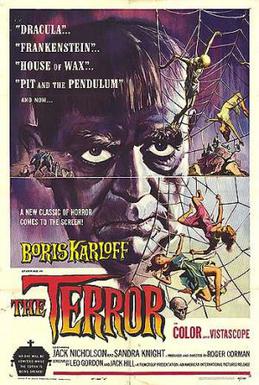
The Terror is a 1963 American independent horror film produced and directed by Roger Corman. The film stars Boris Karloff and Jack Nicholson, the latter of whom portrays a French officer who is seduced by a woman who is also a shapeshifting devil.

Will Hutchins is an American actor most noted for playing the lead role of the young lawyer Tom Brewster, in the Western television series Sugarfoot, which aired on ABC from 1957 to 1961 for 69 episodes.
Fely (Felicisimo) Crisóstomo is a Filipina film director and actress. She was the first woman to win the FAMAS Award for Best Director in 1967.
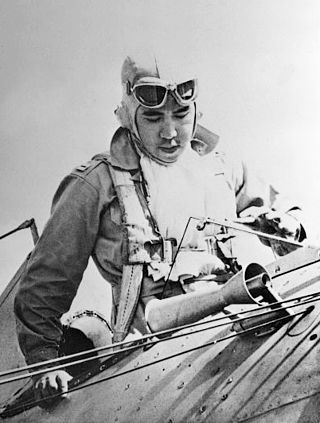
Jesús Antonio Villamor was a Filipino-American pilot, spy, and Medal of Valor awardee who fought the Japanese in World War II.
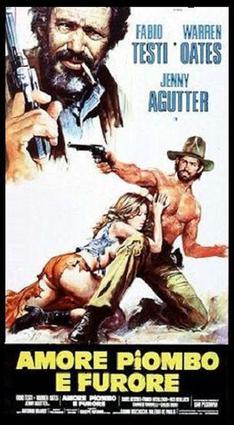
China 9, Liberty 37 is an Italian-Spanish 1978 Western film directed by Monte Hellman, starring Warren Oates, Jenny Agutter, and Fabio Testi. Noted director Sam Peckinpah has a small, rare acting role. The film was shot in locations in Spain and Italy by cinematographer Giuseppe Rotunno. Pino Donaggio composed the musical score. The English title refers to a sign seen at the beginning of the movie on U.S. Route 90 in Beaumont, Texas. Monte Hellman, utilized the scenic location of the highway to enhance the authenticity of its setting. Its inclusion adds an interesting detail to the narrative and showcases the attention to detail in the production. The film had a very sparse theatrical release in the United States, and did not play in some cities until as late as 1984.

Back to Bataan is a 1945 American black-and-white World War II war film drama from RKO Radio Pictures, produced by Robert Fellows, directed by Edward Dmytryk, that stars John Wayne and Anthony Quinn. The film depicts events that took place after the Battle of Bataan (1941–42) on the island of Luzon in the Philippines. The working title of the film was The Invisible Army.

Robert Lenard Lippert was an American film producer and cinema chain owner. He was president and chief operating officer of Lippert Theatres, Affiliated Theatres and Transcontinental Theatres, all based in San Francisco, and at his height, he owned a chain of 139 movie theaters.
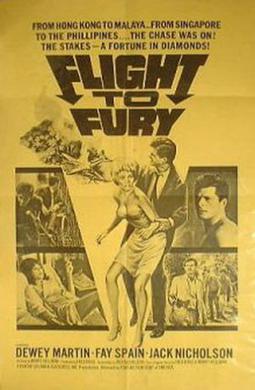
Flight to Fury is a 1964 film starring Jack Nicholson, Fay Spain, Vic Diaz and Dewey Martin. The film was directed by Monte Hellman and filmed back to back with Back Door to Hell in the Philippines in 1964.

Seven Women from Hell is a 1961 war drama directed by Robert D. Webb and starring Patricia Owens, Denise Darcel, Margia Dean, Yvonne Craig and Cesar Romero about women prisoners in a Japanese World War II prison camp, interned with other prisoners.
Annabelle Huggins is a retired Filipino actress. In 1964 she starred alongside Jack Nicholson in Back Door to Hell, and later became famous when she was kidnapped by taxi driver Ruben Ablaza.

Battle at Bloody Beach,, is a 1961 American CinemaScope drama war film directed by Herbert Coleman and starring Audie Murphy who had previously worked together in Posse from Hell. The film also features Gary Crosby and introduces Alejandro Rey. Battle at Bloody Beach is only the second Audie Murphy movie set in World War II, after his autobiographical To Hell and Back. The film was shot on Santa Catalina Island by Robert Lippert's Associated Producers Incorporated and was released by 20th Century Fox. The film was produced and co-written by Richard Maibaum along with frequent Audie Murphy collaborator Willard W. Willingham.
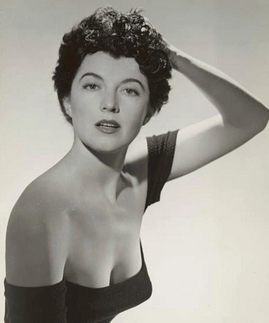
Marguerite Louise Skliris-Alvarez, known by her stage name Margia Dean was an American beauty queen and stage and screen actress of royal Greek descent, who had a career in Hollywood films from the 1940s until the early 1960s, appearing in 30 starring roles and 20 bit parts.

Only the Brave Know Hell is a 1965 Filipino-American war drama film directed by Eddie Romero and co-written by Romero and Cesar Amigo, starring John Saxon, Fernando Poe Jr. and Vic Diaz. It was produced by Hemisphere Pictures, which consisted of Eddie Romero, Kane W. Lynn and Irwin Pizor. In the Philippines, the Pilipino-language version was entitled Hanggang May Kalaban while the English-dubbed version was entitled Only the Brave Know Hell, both of which were released in February 1965, while in the United States, it was released as The Ravagers in December 1965.

Thunder Island is a 1963 American action film directed by Jack Leewood, written by Don Devlin and Jack Nicholson, and starring Gene Nelson, Fay Spain, Brian Kelly, Míriam Colón, Art Bedard and Antonio Torres Martino.

The Walls of Hell, also known as Intramuros is a 1964 Philippine-American film directed by Eddie Romero and Gerardo de Leon and starring Jock Mahoney. The film was made back-to-back with Moro Witch Doctor (1964). It was produced by Hemisphere Pictures.

G.I. Jane is a 1951 American musical comedy film directed by Reginald Le Borg and released by Lippert Pictures.

Gary Kent was an American film director, actor, and stuntman notable for his appearances in various independent and exploitation films. A native of Washington, Kent studied at the University of Washington before later embarking on a film career. He made his feature film debut in Battle Flame (1959) and had roles in several additional low-budget films in the 1960s, including The Black Klansman (1966) and the biker film The Savage Seven (1968). He also served as a stunt double for Bruce Dern in Psych-Out (1969).


















